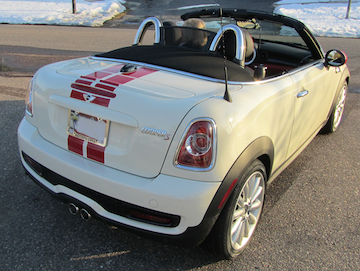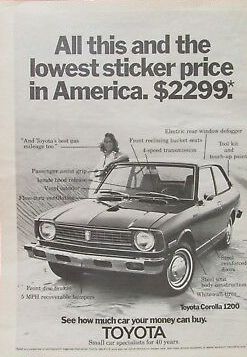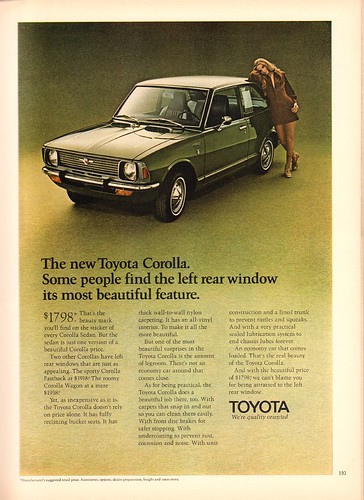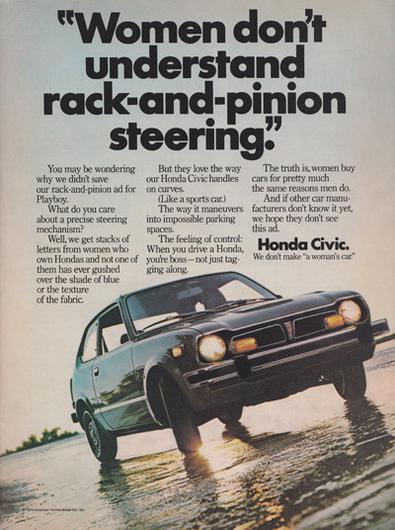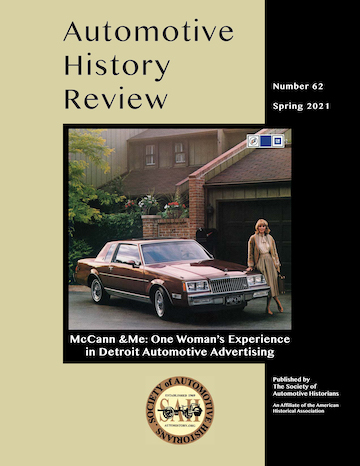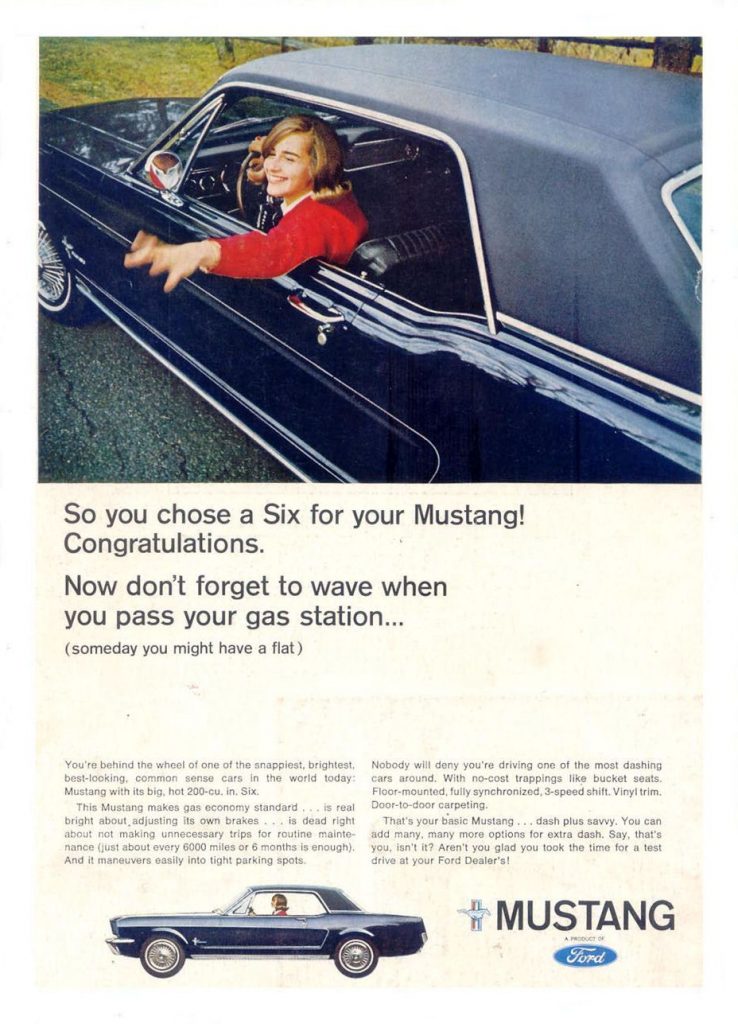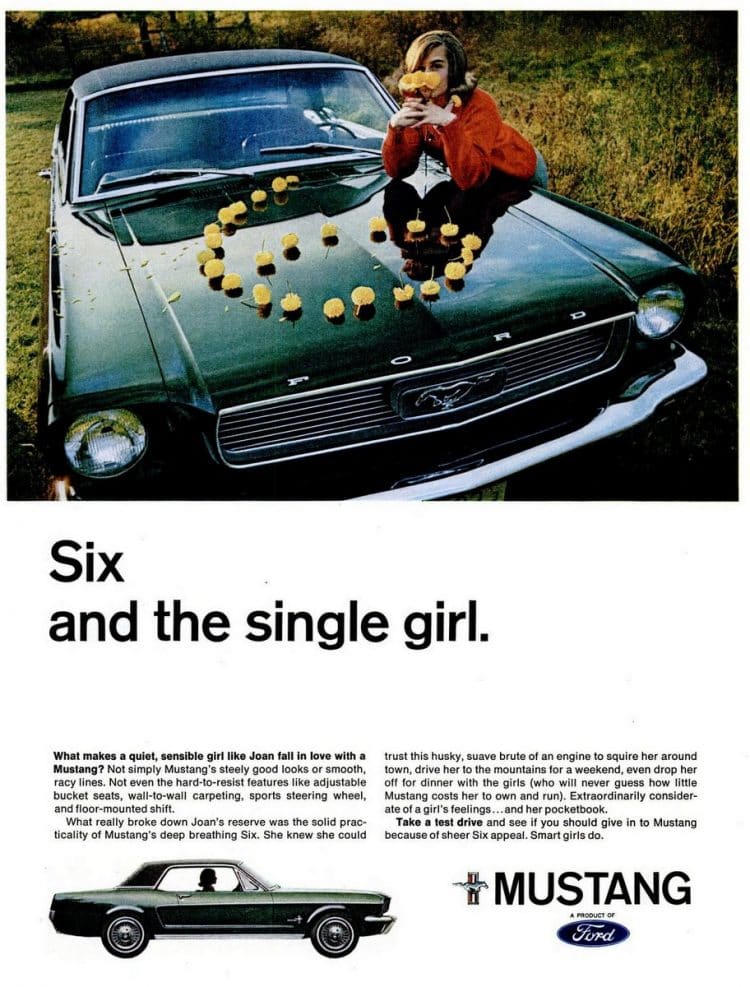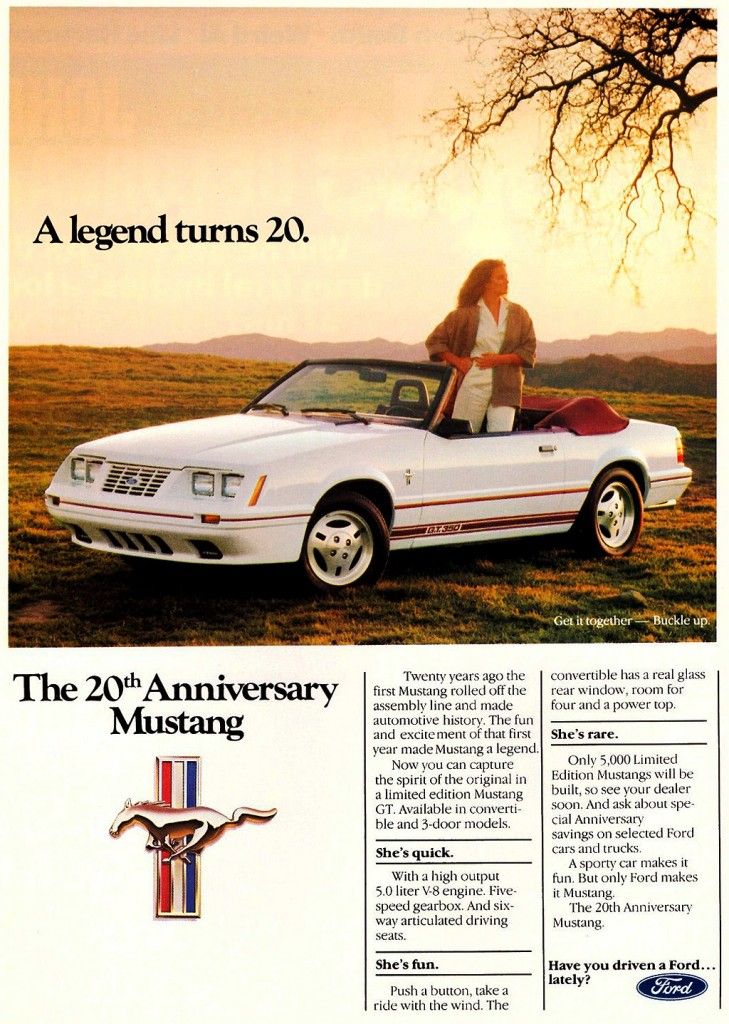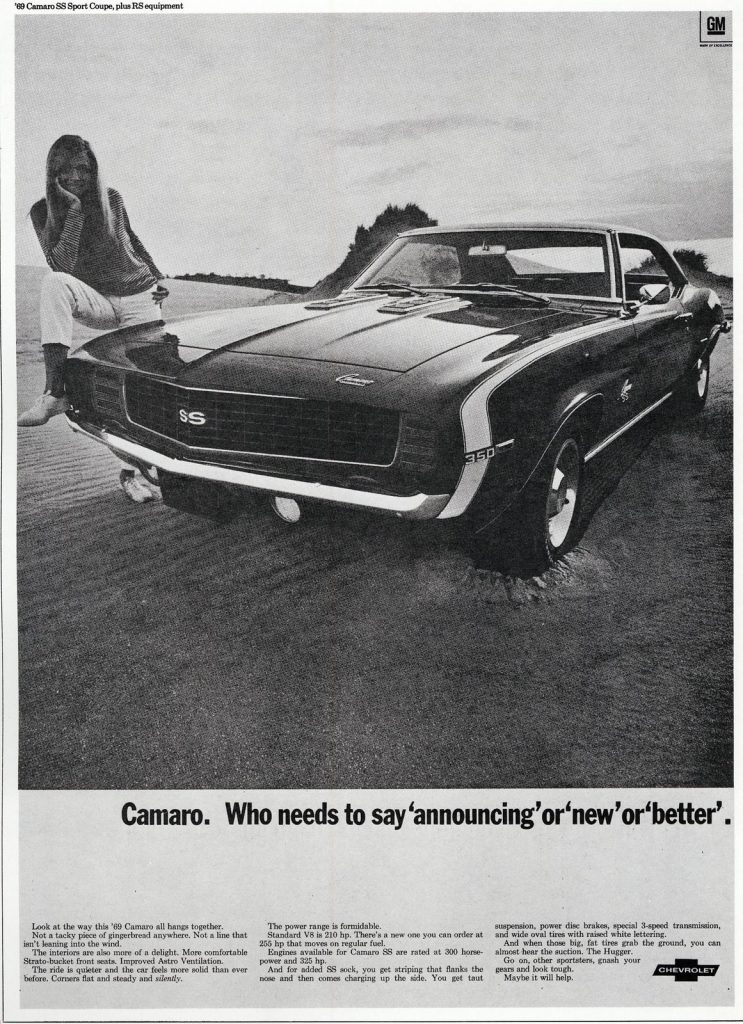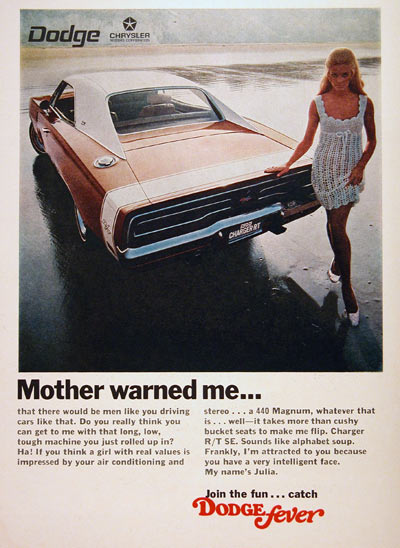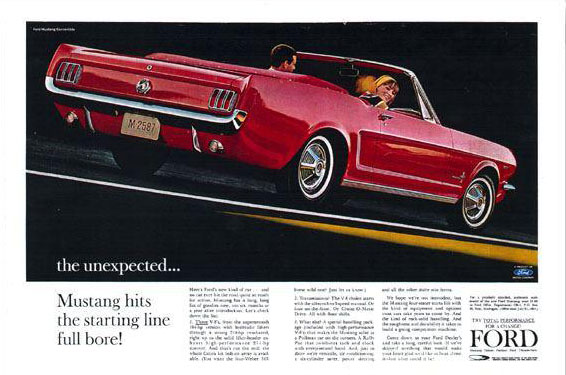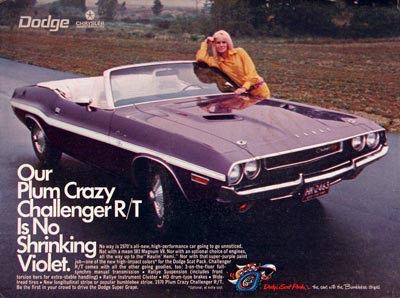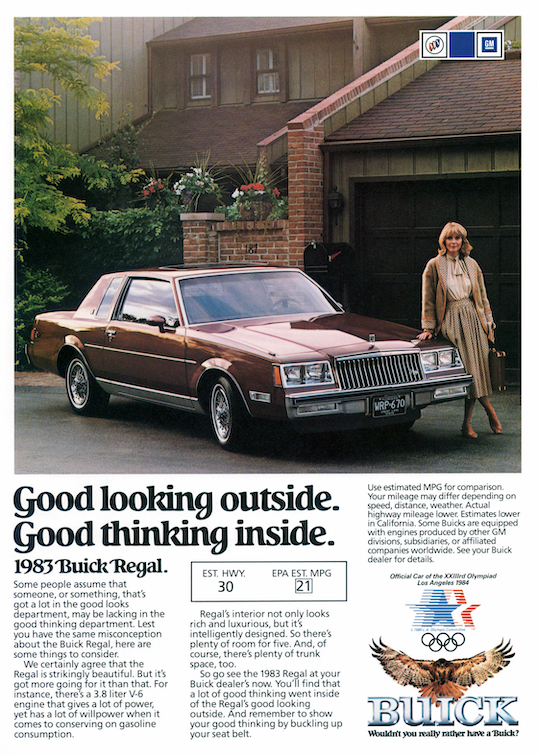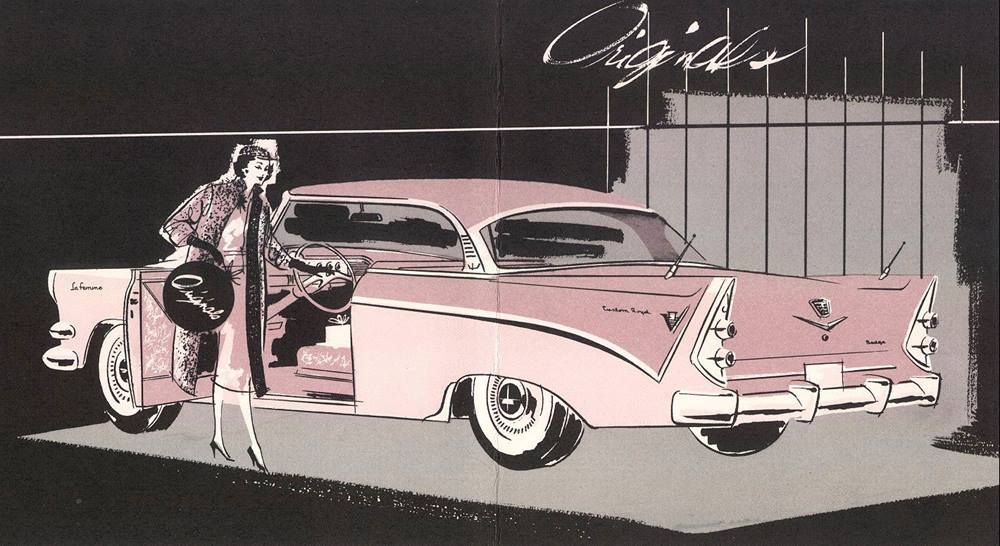While in graduate school during the 2000s, I devised an independent study focused on my growing interest in the relationship between women and cars. What follows is one of the response papers in which I consider how the construction of women as consumers in post World War II automobile culture served to limit women’s possibilities rather than expand them.
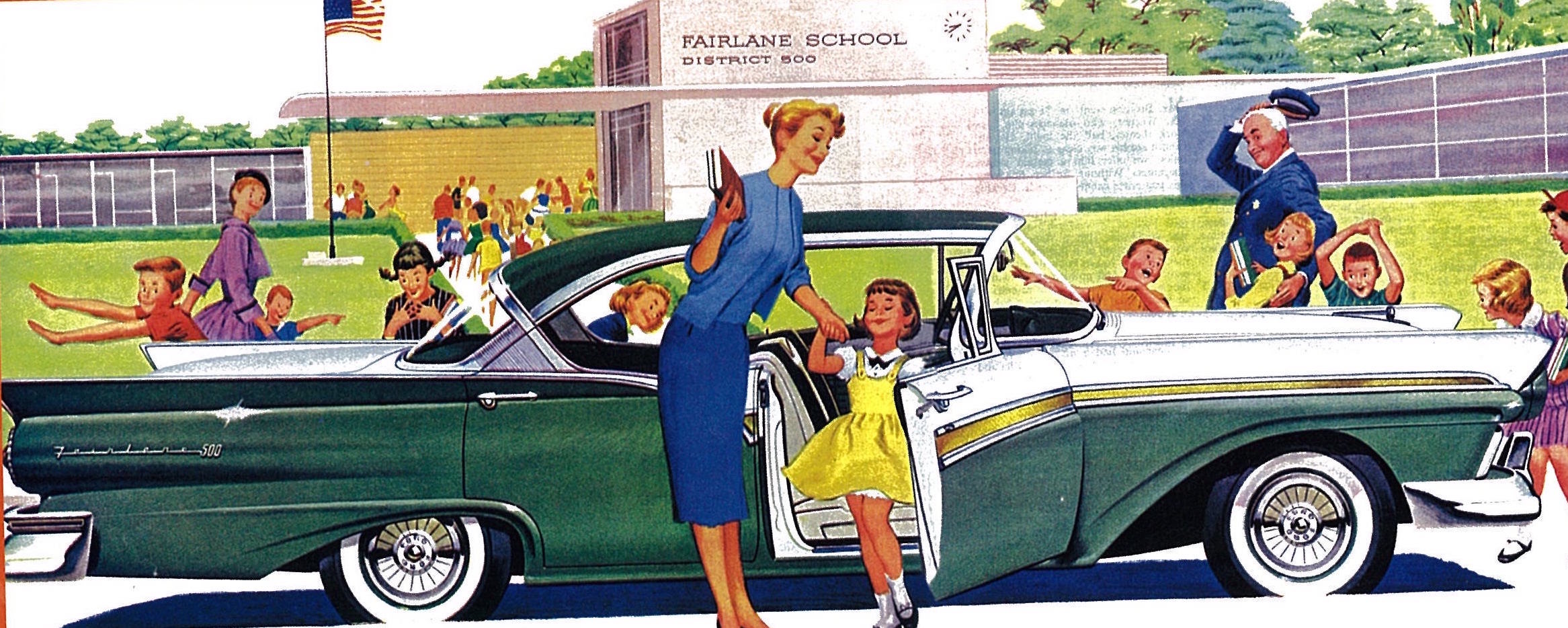
“American Car Culture” was created through the serendipitous confluence of a number of historical and social events in the years following World War II. Prosperity, promise and peace contributed to a fascination and a desire for cars that went beyond practicality and usefulness. As the documentary Tails, Fins and Drive-Ins suggests, twenty years of hardship and conflict created a “national obsession with obtaining the elusive American Dream,” a dream often realized through car ownership. Americans sought a reward for years of self-sacrifice; the automobile not only symbolized an “unlimited supply of economic luster,” but represented a promising and prosperous future as well. Television also contributed to the development of car culture. Its invention coincided with the growing desire to own a car, and television promoted such desire through programming and advertising. The development of a national freeway system, to accommodate the growing number of automobiles, not only changed the landscape of the United States, but also created a demand for family destinations such as motels, drive-in movie theatres and in-car dining. As Mark Foster writes in A Nation on Wheels, the automobile “not only influenced where Americans lived, worked, commuted and ran daily errands, [but] the automobile helped shape many of their leisure activities” (65).
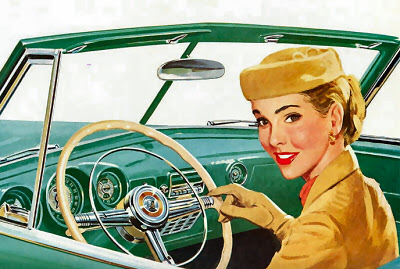
Perhaps more important, as Joseph Interrante in “The Road to Autopia” attests, is the role of the automobile as “simultaneously a cause and consequence of the rise in consumerism” (90). The automobile emerged, both literally and figuratively, as the vehicle of the American consumer society. As Interrante writes, “made possible by the automobility of the car, metropolitan consumerism made the automobile a transportation necessity” (91). A burgeoning economy, and the suburbs that grew alongside the expanding highways, created a desire for products and the ways and means to purchase them. And the role of consumer, considered vital to a healthy economy, was most often awarded to the woman who remained at home.
While few dispute the automobile’s influence in the growth of the American consumer culture, little mention is made of another important “event” that helped set consumerism into motion. And that is the return of women to the domestic sphere after World War II. During the Second World War, women entered the workforce to take over the jobs left by husbands, fathers and brothers enlisted in the armed services. Once victory was attained, women were “encouraged” to leave paid employment in order to create welcoming homes for soldiers returning from war. Just as working in industry was deemed “patriotic” during wartime, setting up housekeeping and establishing families was considered a duty to country. Women’s isolation in the newly developing suburbs made owning a car a necessity, especially in the newly prescribed role as consumer.
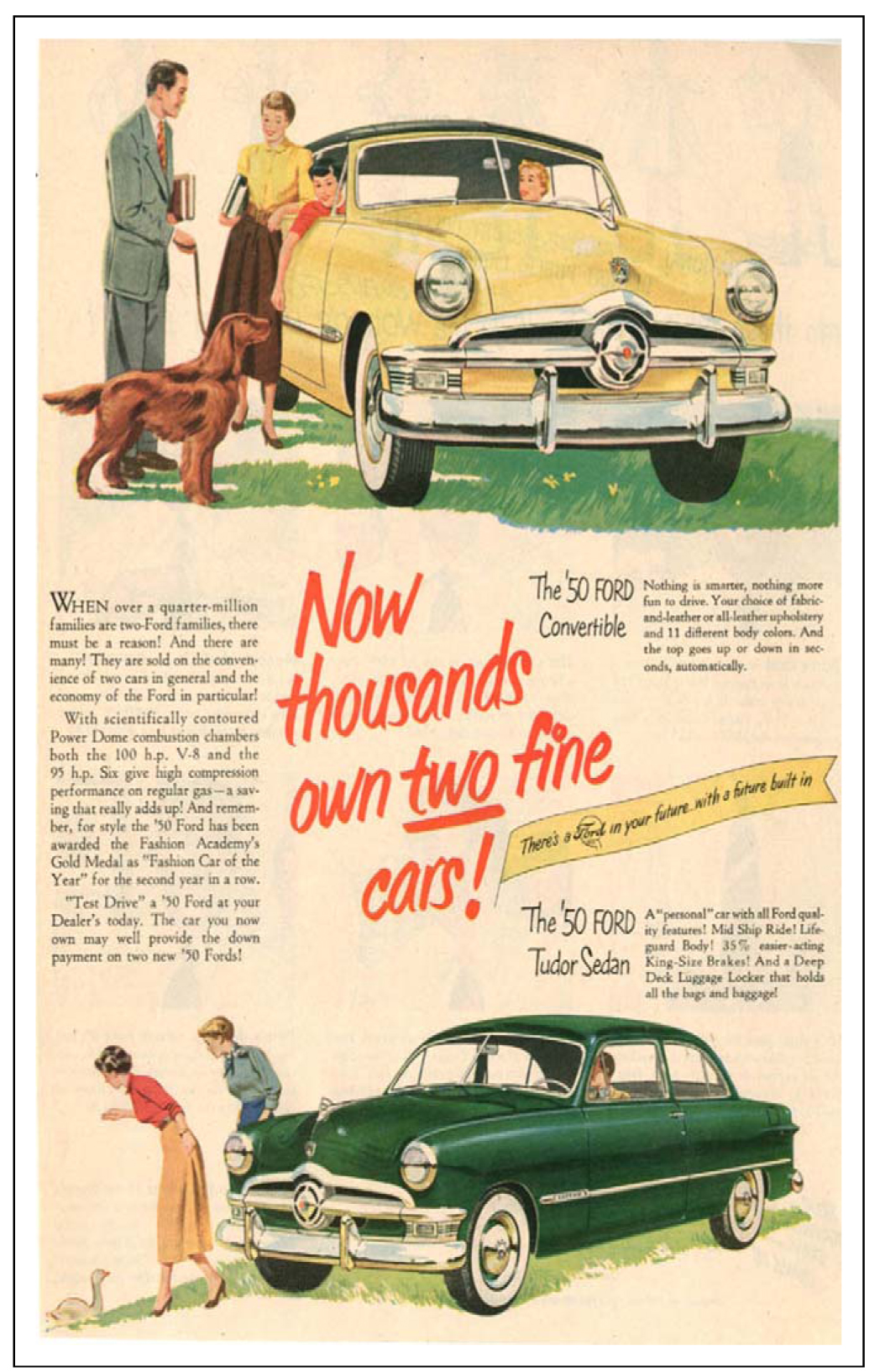
Interrante asserts, “[the automobile] especially liberated women from the home” (99). In The Automobile Age, James Flink concurs, as he writes, “automobility freed […] women from the narrow confines of the home and changed them from producers of food and clothing into consumers of nation-brand canned goods, prepared foods, and ready-made clothes” (163). However, the automobile did not lessen the number of women’s domestic responsibilities; rather, it converted them into consumer duties. The freedom referred to by Interrante and Flint is misleading. After World War II, women were expected to leave the “masculine” work force to reassume the proper, culturally approved gender role of wife and mother. Ascribing women with the role of “consumer,” while bolstering the economy, also served to reinforce the common belief that woman’s place is in the home, unless, of course, she is in the car purchasing products for that home. As Ruth Schwartz Cowan writes, ‘by mid-century, the automobile had become, to the American housewife of the middle classes […] the vehicle through which she did much of her most significant work, and the work locale where she could be most often found” (Flink 164). So while the car culture that emerged after the Second World War opened up exciting new possibilities, experiences and meanings for men, it effectively closed them for women. The automobile as a symbol of rebellion, power, status, and sex appeal became part of masculine car culture. Representations of women in popular car culture, Foster tells us, are primarily “appendages or passive observers to be impressed by powerful machinery” (85). While women may have originally been “enamored,” in the words of Flink, with the possibilities of automobility, such dreams were rarely brought to fruition. In the golden age of American car culture, the automobile symbolized woman’s identity as consumer, and reinforced the culturally prescribed gender role as wife and mother.
Flink, James. The Automobile Age. Cambridge: MIT Press, 1990.
Foster, Mark. Nation on Wheels: The Automobile Culture in American Since 1945. Belmont CA: Thomson, Wadsworth, 2003.
Interrante, Joseph. “The Road to Autopia: The Automobile and the Spatial Transformation of American Culture.” The Automobile and American Culture. David Lewis & Laurence Goldstein, eds. Ann Arbor: University of Michigan Press.
Tail Fins and Drive-Ins. 1996. Allumination Filmwork.
Volti, Rudi. Cars and Culture.: The Life Story of a Technology. Westport CT: Greenwood Press, 2004.
